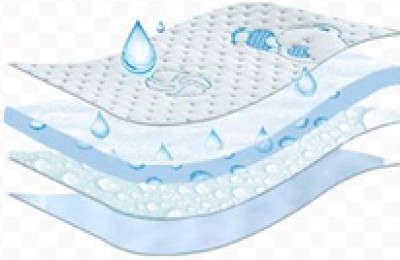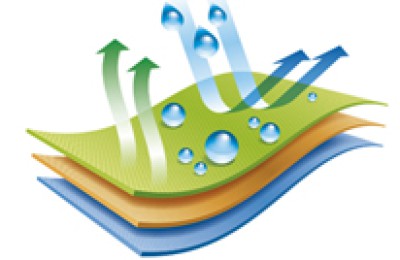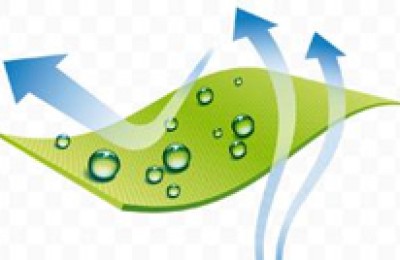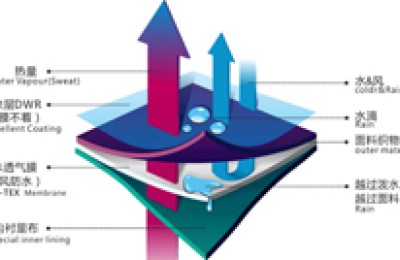1. Uneven scouring causes color flowers.
Uneven scouring and impurities on the fabric cannot be removed Evenly, the moisture absorption rate of the fabric parts is different, resulting in colored flowers.
Measures:
1. The scouring additives should be injected quantitatively in batches, and the additives should be uniform. The injection effect of hydrogen peroxide is better at 60-70 degrees.
2. The cooking and holding time is certain Insulation should be carried out in strict accordance with the process requirements.
3. Dead cloth wrapping treatment Continue to keep warm for a while. 【Waterproof Oxford cloth】
2. Cooking water stains are not clear, and the gray cloth band Alkali dyeing causes colored flowers.
Measures:
After washing the water, neutralize the residual alkali with 10% glacial acetic acid and then wash the water to make the cloth surface PH7-7.5.
3. The residual oxygen treatment on the cloth surface after cooking is not clean.
Measures:
Nowadays, most of them use deoxygenase additives to complete the deoxygenation treatment. In the normal procedure, glacial acetic acid is quantitatively injected for 5 minutes, the temperature is raised to 50 degrees and run for 5 minutes, and then used with clean water. Inject deoxygenating enzyme quantitatively, incubate for 15 minutes, and take a water sample to measure oxygen content.
4. Uneven chemical composition. Insufficient dye dissolution causes color blooming.
Measures:
Stir with cold water first, then dissolve with warm water. Adjust the temperature of the chemical material according to the properties of the dye. The temperature of normal reactive dyes should not exceed 60 degrees. Special dyes need to be cold-hydrated, such as brilliant blue br_v. They can be mixed separately. They must be thoroughly stirred, diluted and filtered before use.
5. The dye accelerator (yuanming powder or salt) is added too fast.
Consequences:
Too fast will cause the dyeing accelerator on the surface of the rope-like fabric, with different concentrations, resulting in different dyeing rates on the inside and outside. And form colored flowers.
Measures:
1. The dye should be added in batches, and each addition should be slow and even.
2. Adding in batches should be less in the first time and more in the next time. Add 10-15 minutes apart to promote dyeing evenly. 【600D Oxford cloth】
Six , Fixing agent (alkali agent) is added too quickly or too much. Causes colored flowers.
Measures:
1. Normally, the alkali is injected quantitatively in 3 times, on the principle of less first and then more, the first dosage is 1%10. The second time 3%10. The last 6%10.
2. Each time Addition should be slow and even.
3. The heating rate should not be too fast. Differences in the surface of the rope-like fabric will cause absorption. The color rate is different and the color is flowery. It is strictly required to control the heating rate (1-2℃/min) to adjust the amount of steam on both sides.
7. Soap colored flowers.
The washing water after dyeing is unclear, and the ph content during soaping If it is too high, it will heat up too quickly and cause colored flowers. After heating to the specified temperature, it must be kept warm for a certain period of time.
Measures:
Wash clean water, neutralize some of the factory’s acid soaping agents, and run it in the dyeing machine for 10 Minutes or so, then raise the temperature. If conditions are convenient for sensitive colors such as lake blue and colorful orchids, try to test the pH before soaping.
Of course with the new soaping agent The emergence of low-temperature soaping agents on the market is a different matter.
8. The washing water in the dye bath is not clear, causing Chromatic flowers and stains.
After soaping The residual liquid in the washing water is not clear, so the concentration of residual color liquid on the surface and inside of the fabric is different, and it will be fixed on the fabric to form color flowers during drying.
Measures:
After dyeing, wash with enough water to remove floating color. 【300D Oxford cloth】
9. Color difference caused by adding color (tank difference, stripe difference) Poor) color flowers
1. Reasons for color difference:
A. The speed of adding materials is different. If the dosage of dyeing promoter is small, it will have an impact whether it is added in batches. If it is added at one time, the time is short, the dyeing promoter is not enough, resulting in color flowers.
B. Add materials on both sides and rub unevenly, causing stripes, such as one side being deep The side with more color is lighter.
C. Holding time
D. Color differences are caused by different cutting and color matching techniques.
Requirement: Cut the sample using the same technique and match the color.
For example: cut the sample after 20 days of heat preservation to match the color, and the degree of washing after cutting the sample no the same.
E. Different liquor ratios cause color difference. Small bath ratio: dark color Large bath ratio: light color
F, post-processing The degree is different. If the post-processing is sufficient, the floating color is sufficient to be removed, and the color will be lighter than if the post-processing is insufficient.
G. There is a temperature difference on both sides and in the middle, causing a stripe difference
Add color slowly, at least 20 minutes for quantitative injection, and 30-40 minutes for sensitive colors.
Suzhou Textile Co., Ltd.: www.wcxfz.com
t: 25.6px; widows: auto; box-sizing: border-box !important; word-wrap: break-word !important; background-color: rgb(255, 255, 255);”>For example: cut after insulation 20 The color of the sample is correct, and the degree of washing after cutting is different.
E. bath Different ratios cause color difference. Small bath ratio: darker color Large bath ratio: lighter color
F. The degree of post-processing is different. If the post-processing is sufficient, the floating color removal is sufficient, and the color will be lighter than if the post-processing is insufficient.
G. There is a temperature difference between the two sides, causing a stripe difference
Add color slowly, at least 20 minutes for quantitative injection, and 30-40 minutes for sensitive colors.
Suzhou Textile Co., Ltd.: www.wcxfz.com</ p




